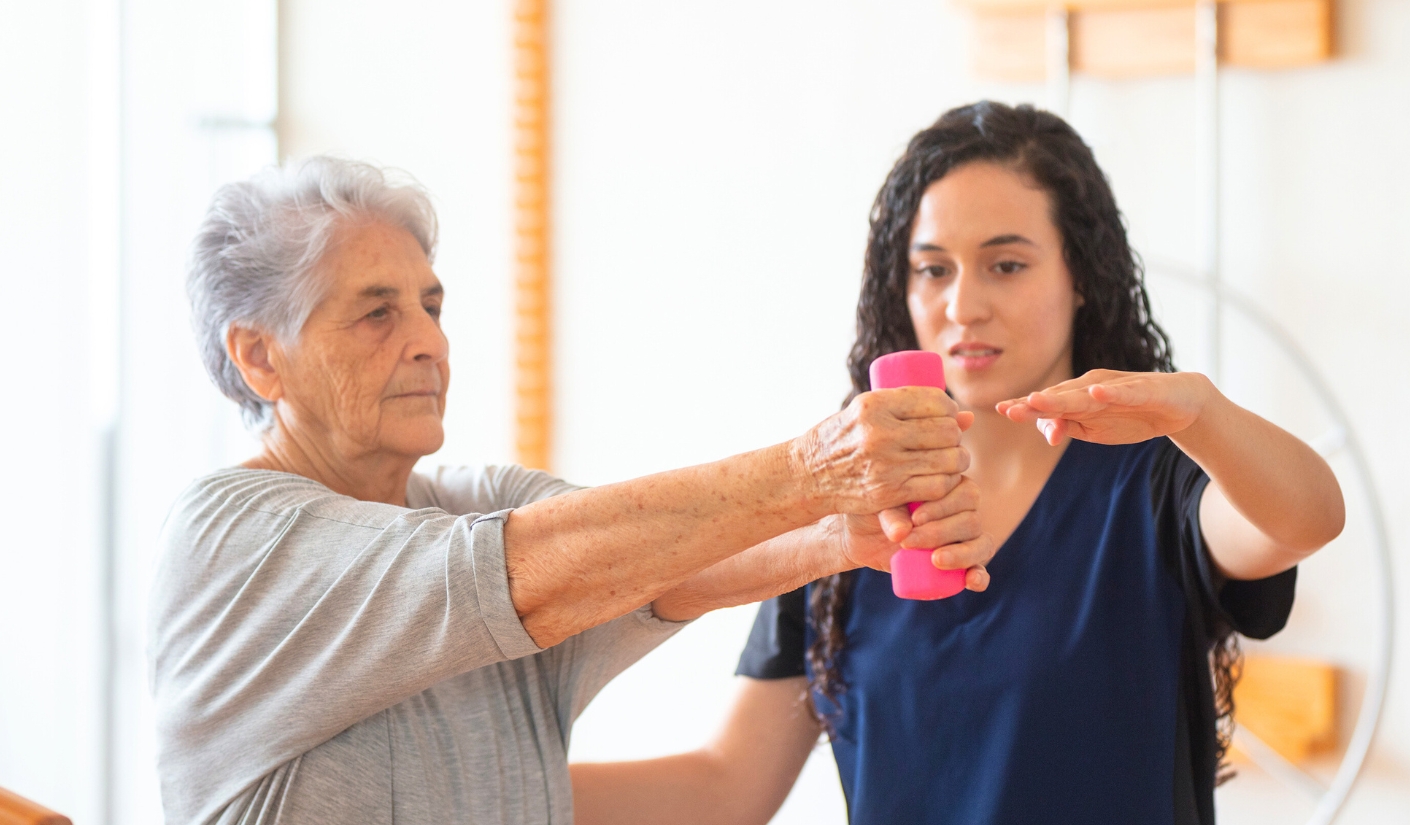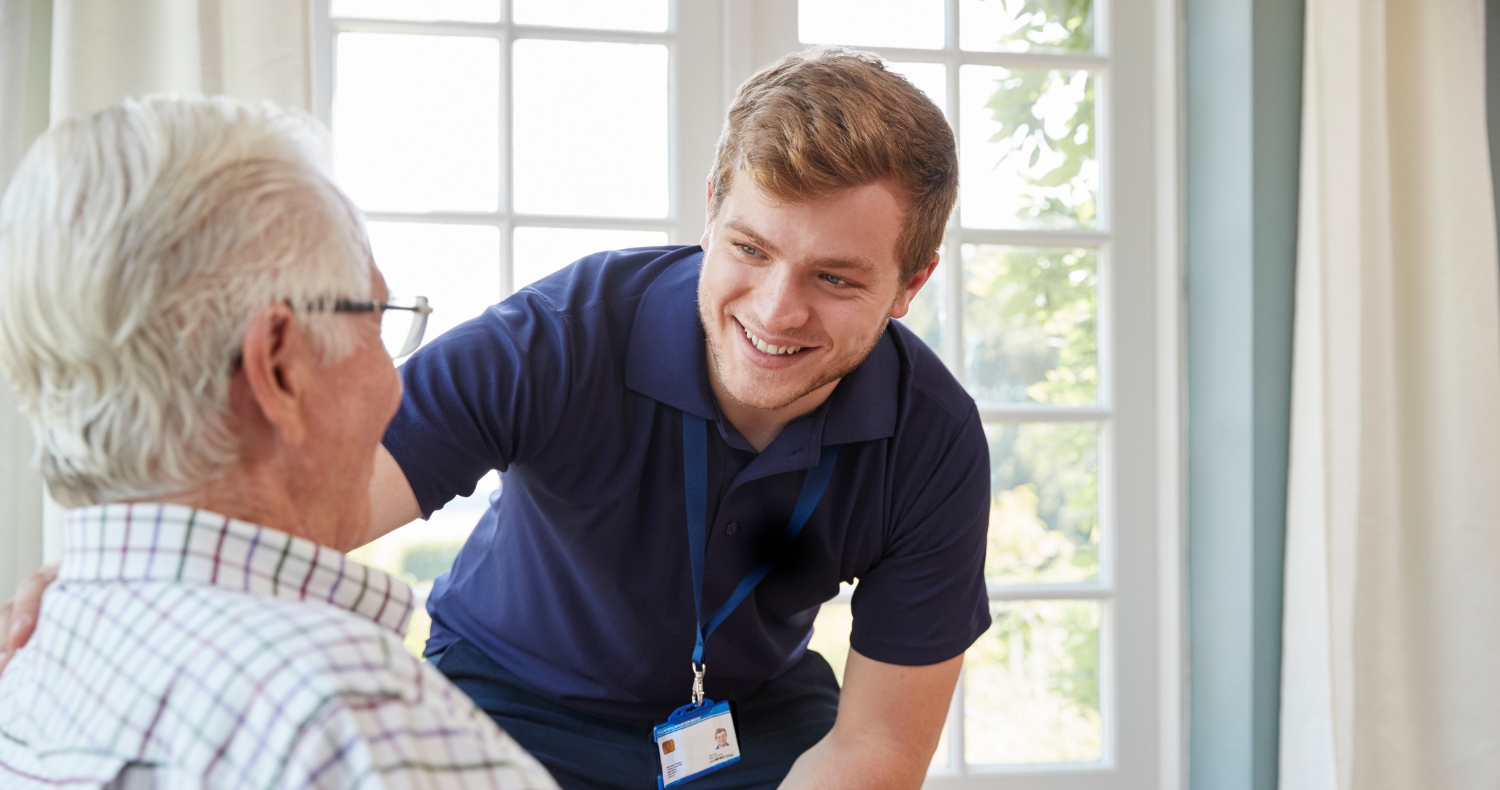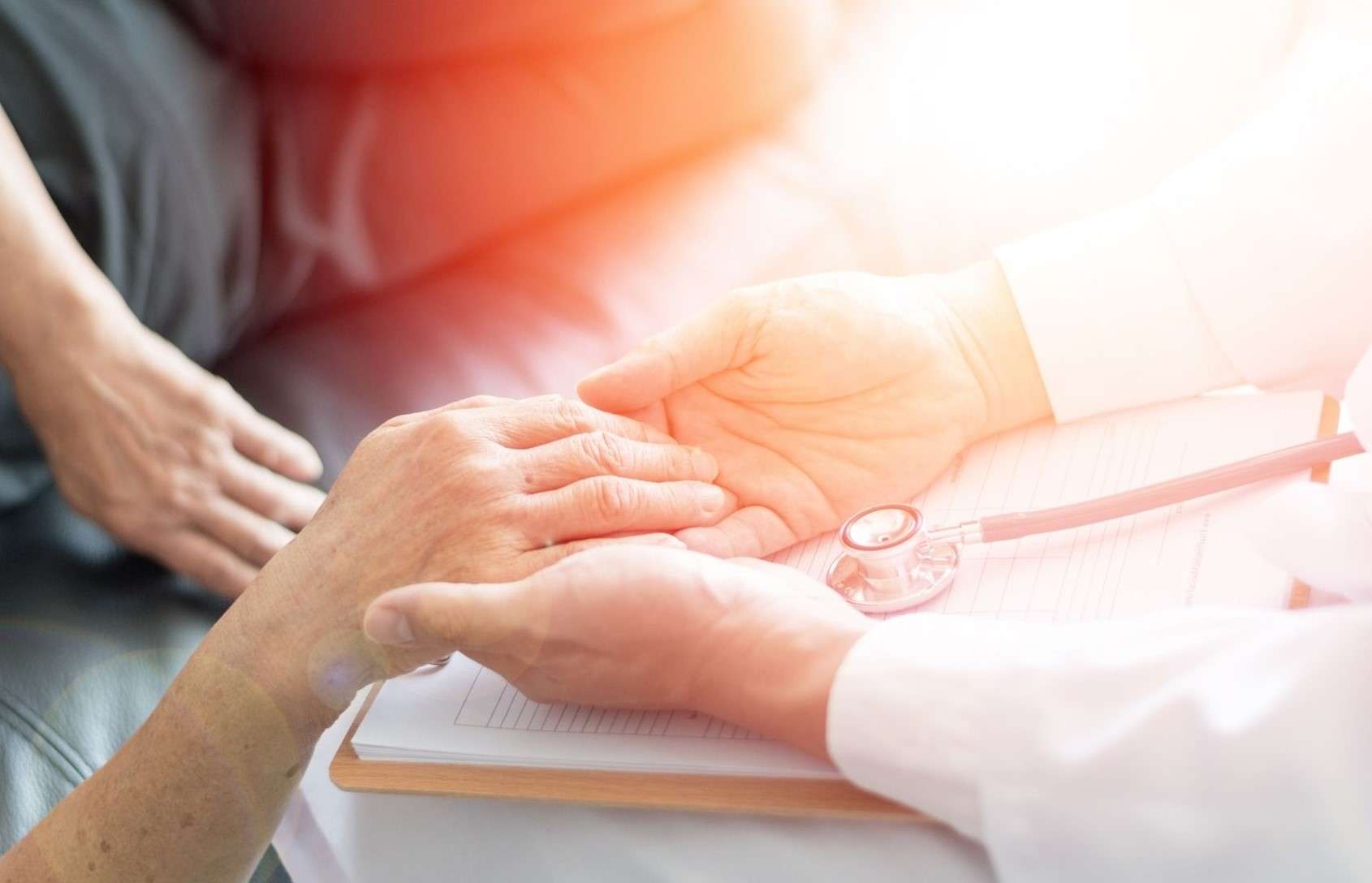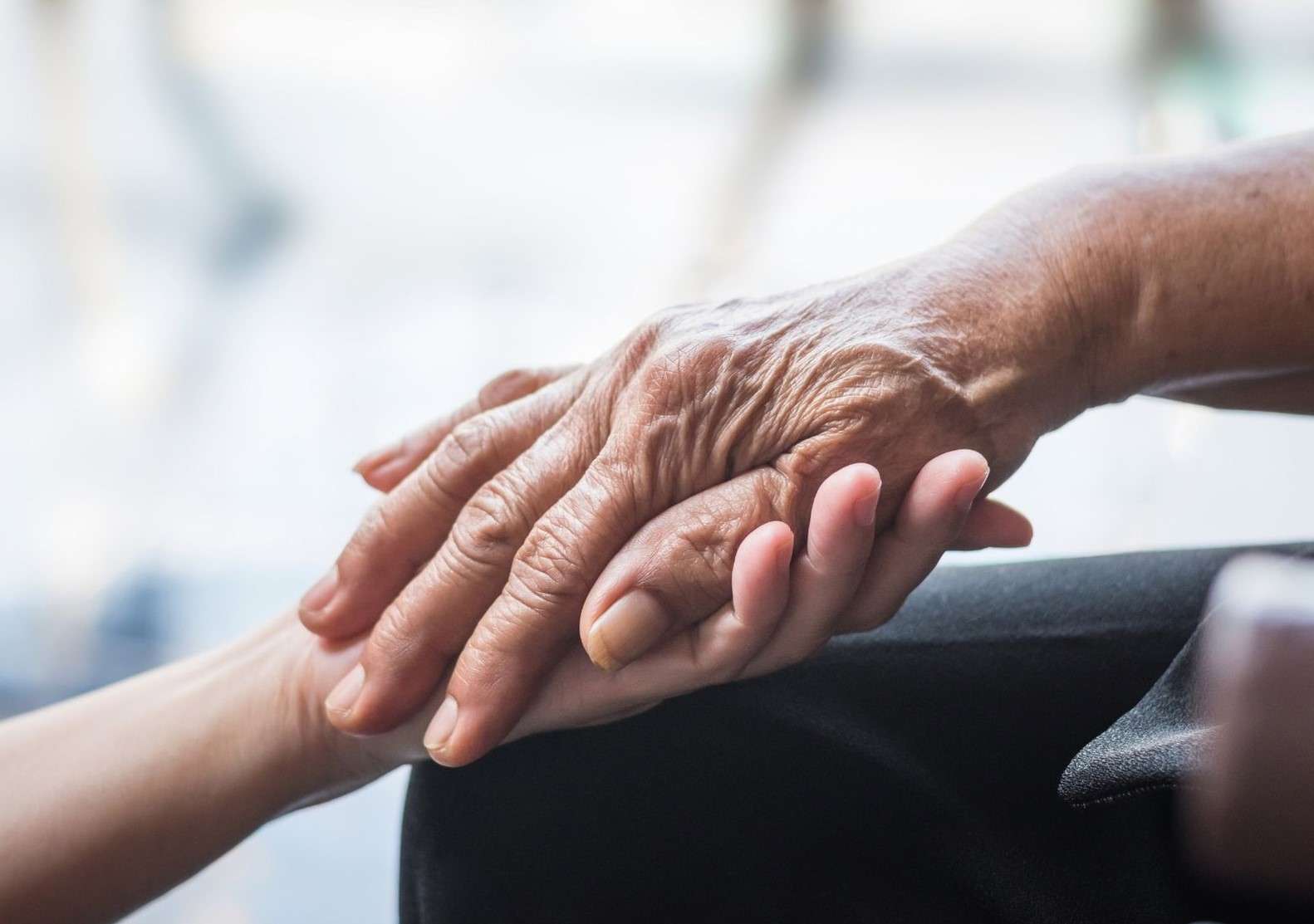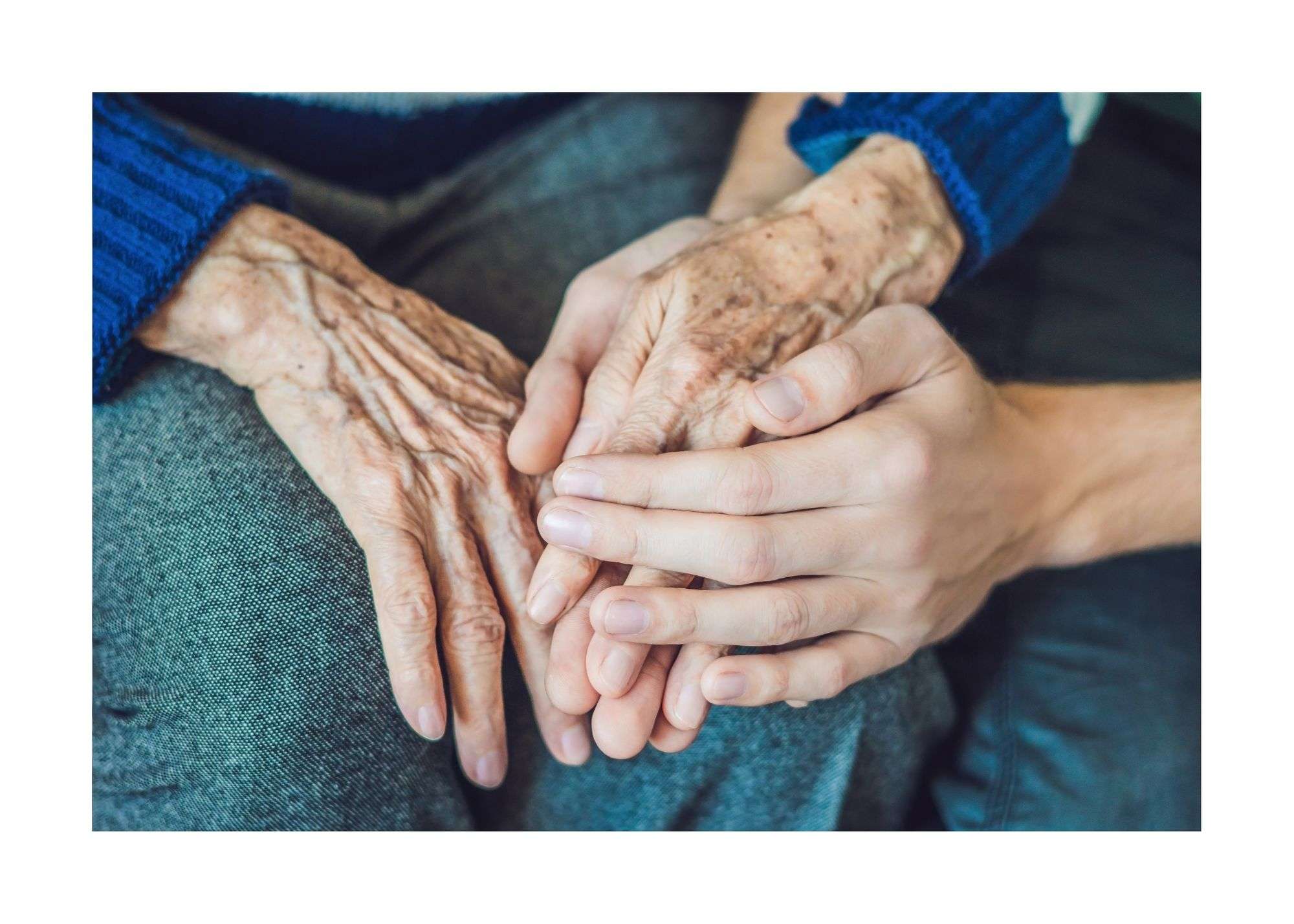At Maple Knoll Village, our dedicated therapists help residents regain independence, improve safety, and enhance quality of life through personalized, meaningful care. From daily tasks to emotional well-being, occupational therapy supports every step of the aging journey.
Continue readingThe Vital Role of Social Workers in Senior Living Communities
Senior living social workers provide support, advocacy, and guidance for older adults. Often the unsung heroes, they work tirelessly behind the scenes to help seniors navigate transitions while promoting well-being, respect, and resilience.
Continue readingWhat is Hospice Care? And why is it so important?
Hospice care provides physical, psychological, social and spiritual support for those who are in their last stages of a terminal illness. Typically, hospice care is suggested by a healthcare provider when a patient has six months or less to live. Many individuals who are experiencing terminal and chronic conditions such as cancer, heart disease, dementia and kidney failure use hospice as a way to prepare for the last stages of their journey. In addition, hospice care can help families cope with the forthcoming loss of a loved one through counseling and respite care. While hospice care is often focused on meeting the physical needs of a patient, many people are unaware of its robust offerings for both the individual receiving care and their family members.
What Does Hospice Care Provide?
Many hospice care providers take different approaches to services and types of support, however all hospice providers are required to offer certain services. According to the American Cancer Society, here are a few of the most common types of hospice services provided for patients:
Palliative care
Palliative care, or symptom management, is provided as a part of hospice and is designed to prevent or treat any symptoms related to an individual’s illness. Palliative care helps address any pain or discomfort in order to allow the patient to enjoy the last stage of life with their loved ones. The main goal of palliative care is to ensure the patient is comfortable and knows their options.
Home care
Most hospice care is given directly from an individual’s home. However, there may be some situations where hospice care needs to be given from a hospital or long-term care facility. A hospice team can arrange for care no matter where you are, and will be involved with your care plans and family members.
Spiritual care
In addition to managing pain and controlling symptoms, hospice care also provides an individual with spiritual or religious care, depending on their beliefs and preferences. Spiritual care can help an individual prepare to say goodbye to their loved ones to with planning a religious or spiritual ceremony and burial plans.
Family meetings
A hospice care team will meet regularly with family members and keep them informed about their loved one’s condition and help manage expectations. These meetings allow family members to discuss their feelings, ask questions and prepare for the death of their loved one. In addition, the hospice care team will share daily updates and make routine visits.
Coordination of care
The hospice care team is responsible for coordinating care for the individual and sharing information to those involved in providing medical care. This might include an inpatient facility, pharmacists, clergy and even funeral directors. Hospice care teams are also available anytime during the day or night if a question or problem were to arise.
Respite care
Caregiving can be extremely challenging for spouses and other family members. That’s why hospice services provide respite care. During respite care, an individual is cared for in the hospital or a nursing home so their caregivers can rest at home, attend to other responsibilities or simply take a break.
Bereavement care
After a loved one dies, the hospice care team will provide support to the family during the grieving process. Trained volunteers, clergy members or professional counselors will provide visits, phone calls, support groups or counseling sessions to members of the family. The hospice care team can also provide resources and other professional care when needed.
Who makes up a Hospice Care Team?
According to the Mayo Clinic, a hospice care team is made up of professionals ranging from healthcare providers to volunteers and home health aides. If you or your loved one is receiving hospice care, here’s who you can expect to be on your care team:
- Doctors. Those who receive hospice care will be under the supervision of a primary care doctor, hospice doctor or medical director. Each patient will be able to choose their primary doctor who will oversee their care.
- Nurses. Nurses will provide care in any setting, depending on where the individual is receiving hospice services. Nurses are also responsible for coordinating the hospice care team.
- Home health aides. Home health aides provide additional support with daily activities such as bathing, dressing, eating and other routine tasks.
- Spiritual counselors. Chaplains, priests, lay ministers and other spiritual counselors or advisers can help provide spiritual care and guidance to the individual receiving care and their family members.
- Social workers. Social workers provide counseling, support, and referrals to other support systems and resources both for the patient and their families.
- Pharmacists. Pharmacists provide medication management and offer suggestions on how to best relieve symptoms and manage pain.
- Volunteers. Trained volunteers often provide a variety of services including respite care, transportation services and help with additional needs.
- Other professionals. Speech, physical and occupational therapists can provide therapy when needed.
- Bereavement counselors. Trained bereavement counselors offer support and guidance to family members after the death of their loved one.
Benefits of Hospice Care
Watching a loved one go through their final stages of life is hard for everyone involved. Hospice care provides comprehensive care that supports both the individual and their family members through this difficult time. While hospice can be provided in a hospital or long-term care facility, it can also be provided in the comfort of one’s own home, which allows patients to feel more comfortable and relaxed. Hospice also provides a comprehensive care plan, which takes the burden off of family members and allows them to spend quality time with their loved one without worry for the future. In addition, hospice care can be personalized to fit the needs of the individual and support their wishes for the future.
Long Distance Caregiving
For adult children with aging parents that need assistance, knowing how to provide support doesn’t always come naturally. Adult children who act as caregivers for their parents are often raising families of their own and many are still part of the workforce. To make matters even more difficult, a number of them live long-distance. In fact, of the 34 million Americans who care for older family members, nearly 15% are long-distance caregivers. Long-distance caregivers refer to individuals living more than hour away from those they are providing care for, typically their parents or other relatives. In addition to the same pressures and challenges that face local caregivers, long-distance caregivers have the added challenges of needing to coordinate care, hire help and take uncompensated time off of work and pay for travel expenses. While caregiving from afar can seem nearly impossible, long-distance caregivers successfully take on a number of different roles.
What Can Long-Distance Caregivers Really Do?
According to the National Institute on Aging, long-distance caregivers can support their aging parents or other family members in a number of different ways. Here are a few of the most common roles long-distance caregivers play within their family unit:
- Managing finances and paying bills
- Hire in-home care such as home health, professional caregivers or nursing aides
- Locate and coordinate with assisted living or nursing facilities
- Provide emotional support for the primary caregiver and offer respire care when needed
- Navigate health insurance claims and benefits
- Consolidate paperwork, medical information and organize important documents in the event of an emergency
- Evaluate the house to make sure it’s safe for a loved one
Tips for Providing Care from Afar
One of the biggest challenges for long-distance caregivers is staying informed and confident that their loved one is in the best possible care. According to AARP, here are some important tips to consider if you are providing care for a loved one but live long-distance.
Establish Access
If you are the primary caregiver or a sole child of an aging parent, it’s crucial to establish good information channels to stay up-to-date on your loved one’s wellbeing. In addition, it can be helpful to have legal and financial authority in order to make sound decisions on behalf of your loved one. Discussing financial matters can be uncomfortable, but it’s important to understand your parent’s financial situation in order to plan for the future. Come up with a plan for how they will pay for health care along with other everyday expenses. This includes looking into their long-term care insurance policies and major payments such as housing and any active loans.
While creating channels of access, long-distance caregivers should also request access to any important information such as medical records, banking and insurance information, since you may become responsible for paying the bills in the future. It’s important to have this conversation with your loved ones as early as possible in order for them to clearly state their wishes. This may also be an appropriate time to ask your loved ones to designate a durable power of attorney for both health care and financial decisions. This will allow a designated person to make decisions on their behalf when they are no longer able to make decisions for themselves.
Long-distance caregivers should also create an emergency plan for their loved ones. This includes assigning a local and trusted individual to have access to your loved one’s home whether that is through a garage code or an extra set of keys. For individuals living at retirement communities including assisted living facilities and nursing homes, most facilities have 24-hour security staff who can perform wellness checks when needed.
Stay Updated
It is essential for long-distance caregivers to find ways to communicate regularly with their loved ones and their care teams. Utilizing different technologies like FaceTime, WhatsApp, and Skype will allow you to see your loved one and give you peace of mind or alert you to any changes in their physical health. At Maple Knoll Village, the Family App allows family members to stay in contact with staff members and sends alerts and notifications to important announcements and policy changes.
Plan Your Visits
In-person visits allow you to assess your loved one’s wellbeing and can provide insight that might otherwise be hard to gather when living remote. Experts suggest trying to stretch any in-person visit to allow time for doctor’s appointments and any other in-person visits. This might also be a good time to meet current and potential service providers including housekeepers, facility staff members, social workers or physicians. When visiting, make sure to assess your loved one’s home or living quarters to check for signs of abuse or cognitive decline. If you see old food in the refrigerator, unpaid bills or signs of financial misconduct, it could be a sign that your loved one needs more support or different care providers.
Supporting Your Family from Afar
Caregiving is a difficult responsibility and doing it from afar doesn’t make it an easier. A lot of families find peace of mind when their loved ones have a safe place to call home, such as Maple Knoll Village. Our staff is mindful that long-distance family members are doing their best to provide support in the ways they are able. Remember to be kind to yourself!
Holiday Health Tips for Seniors
Importance of Hydration in Older Adults
Healthy Eating for Seniors
Brain Exercises for Older Adults
Skin Care Tips for Seniors
What is Hospice Care? And why is it so important?
Hospice care provides physical, psychological, social and spiritual support for those who are in their last stages of a terminal illness. Typically, hospice care is suggested by a healthcare provider when a patient has six months or less to live. Many individuals who are experiencing terminal and chronic conditions such as cancer, heart disease, dementia and kidney failure use hospice as a way to prepare for the last stages of their journey. In addition, hospice care can help families cope with the forthcoming loss of a loved one through counseling and respite care. While hospice care is often focused on meeting the physical needs of a patient, many people are unaware of its robust offerings for both the individual receiving care and their family members.
What Does Hospice Care Provide?
Many hospice care providers take different approaches to services and types of support, however all hospice providers are required to offer certain services. According to the American Cancer Society, here are a few of the most common types of hospice services provided for patients:
Palliative care
Palliative care, or symptom management, is provided as a part of hospice and is designed to prevent or treat any symptoms related to an individual’s illness. Palliative care helps address any pain or discomfort in order to allow the patient to enjoy the last stage of life with their loved ones. The main goal of palliative care is to ensure the patient is comfortable and knows their options.
Home care
Most hospice care is given directly from an individual’s home. However, there may be some situations where hospice care needs to be given from a hospital or long-term care facility. A hospice team can arrange for care no matter where you are, and will be involved with your care plans and family members.
Spiritual care
In addition to managing pain and controlling symptoms, hospice care also provides an individual with spiritual or religious care, depending on their beliefs and preferences. Spiritual care can help an individual prepare to say goodbye to their loved ones to with planning a religious or spiritual ceremony and burial plans.
Family meetings
A hospice care team will meet regularly with family members and keep them informed about their loved one’s condition and help manage expectations. These meetings allow family members to discuss their feelings, ask questions and prepare for the death of their loved one. In addition, the hospice care team will share daily updates and make routine visits.
Coordination of care
The hospice care team is responsible for coordinating care for the individual and sharing information to those involved in providing medical care. This might include an inpatient facility, pharmacists, clergy and even funeral directors. Hospice care teams are also available anytime during the day or night if a question or problem were to arise.
Respite care
Caregiving can be extremely challenging for spouses and other family members. That’s why hospice services provide respite care. During respite care, an individual is cared for in the hospital or a nursing home so their caregivers can rest at home, attend to other responsibilities or simply take a break.
Bereavement care
After a loved one dies, the hospice care team will provide support to the family during the grieving process. Trained volunteers, clergy members or professional counselors will provide visits, phone calls, support groups or counseling sessions to members of the family. The hospice care team can also provide resources and other professional care when needed.
Who makes up a Hospice Care Team?
According to the Mayo Clinic, a hospice care team is made up of professionals ranging from healthcare providers to volunteers and home health aides. If you or your loved one is receiving hospice care, here’s who you can expect to be on your care team:
- Doctors. Those who receive hospice care will be under the supervision of a primary care doctor, hospice doctor or medical director. Each patient will be able to choose their primary doctor who will oversee their care.
- Nurses. Nurses will provide care in any setting, depending on where the individual is receiving hospice services. Nurses are also responsible for coordinating the hospice care team.
- Home health aides. Home health aides provide additional support with daily activities such as bathing, dressing, eating and other routine tasks.
- Spiritual counselors. Chaplains, priests, lay ministers and other spiritual counselors or advisers can help provide spiritual care and guidance to the individual receiving care and their family members.
- Social workers. Social workers provide counseling, support, and referrals to other support systems and resources both for the patient and their families.
- Pharmacists. Pharmacists provide medication management and offer suggestions on how to best relieve symptoms and manage pain.
- Volunteers. Trained volunteers often provide a variety of services including respite care, transportation services and help with additional needs.
- Other professionals. Speech, physical and occupational therapists can provide therapy when needed.
- Bereavement counselors. Trained bereavement counselors offer support and guidance to family members after the death of their loved one.
Benefits of Hospice Care
Watching a loved one go through their final stages of life is hard for everyone involved. Hospice care provides comprehensive care that supports both the individual and their family members through this difficult time. While hospice can be provided in a hospital or long-term care facility, it can also be provided in the comfort of one’s own home, which allows patients to feel more comfortable and relaxed. Hospice also provides a comprehensive care plan, which takes the burden off of family members and allows them to spend quality time with their loved one without worry for the future. In addition, hospice care can be personalized to fit the needs of the individual and support their wishes for the future.

